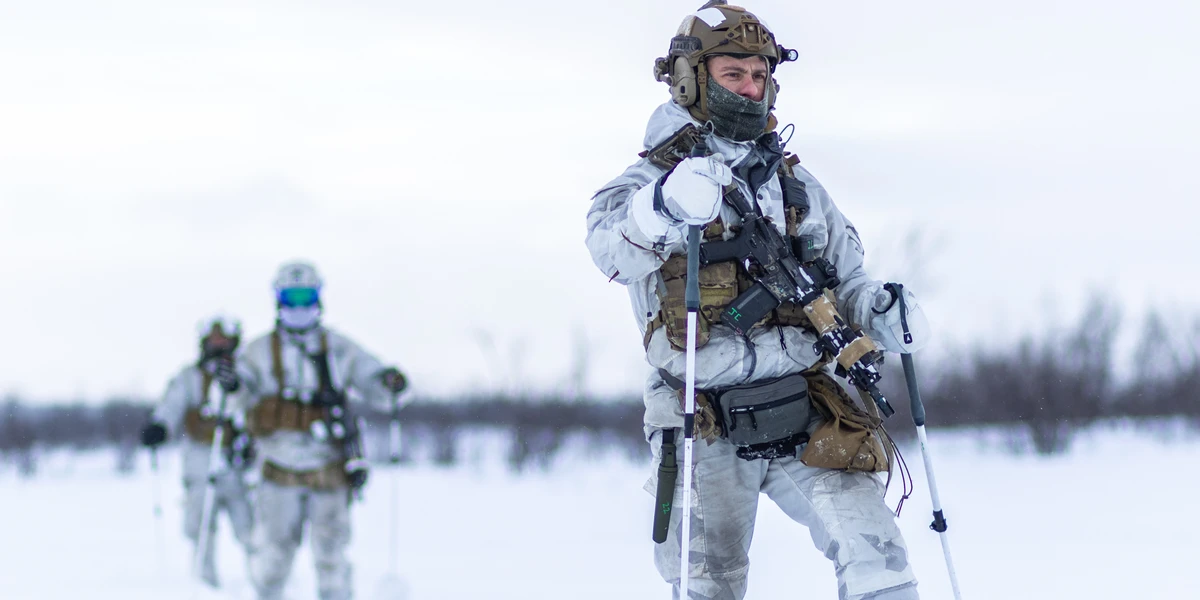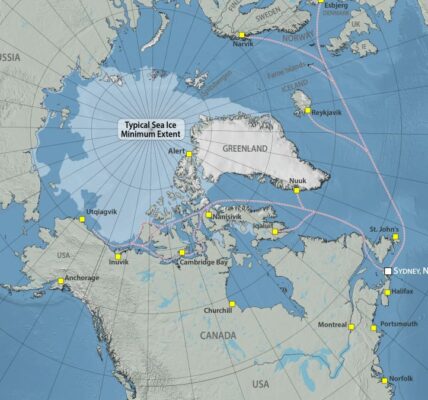The Arctic is no longer on the periphery of world politics. Climate change reveals a resource-rich region increasingly open to outside actors. Technological advances are equipping competitors and adversaries with new strategic systems, meaning North America is no longer a sanctuary. The Arctic could become a thoroughfare for a kinetic attack on the United States or Canada, as ballistic trajectories make time and space critical. With renewed strategic competition, the risk of escalation or global conflict spilling into the Arctic cannot be dismissed.
While classrooms provide theory, our experience shows that nothing replaces being on the ground. Extreme cold is only part of the challenge; remoteness, sparse infrastructure and vast distances are best understood by seeing them firsthand and learning from local residents.
Learning in the Field: Alaska/Yukon Experience
In November 2024, an Alaska/Yukon field school explored Canada-U.S. Arctic defence cooperation. The program brought 12 U.S. Air Force Academy cadets and nine Canadian university students on a 1,100-kilometre journey from Anchorage to Whitehorse. Stops included the University of Alaska Fairbanks, Eielson Air Force Base, and meetings with Canadian Rangers in Whitehorse, culminating at Yukon University. Students engaged with northern researchers and practitioners to understand the multifaceted nature of Arctic security, emphasizing whole-of-society approaches and the principle of “nothing about us, without us.”
Participants examined longstanding threats, such as Russian strategic weapons routes, and emerging dangers, such as growing Chinese military capabilities. They discovered distinct differences between threats to the American and Canadian Arctic — insights often overlooked in mainstream security commentary.
Distinct Threats: Alaska Versus Canada’s North
Students observed Alaska’s strong military presence compared to the Yukon. Elmendorf and Eielson Air Force Bases host advanced aircraft fleets and extensive infrastructure. At Eielson, participants learned about two main missions: deterring Russia and China, and projecting force into the Pacific. This explains discussions about reopening a base at Adak in the Aleutians.
Alaska, unlike northern Canada, is directly in the crosshairs of adversaries. As the western flank of U.S. Northern Command, Alaska plays a central role in intercepting Russian or Chinese bombers and missiles en route to southern Canada or the continental U.S. Canadian infrastructure, such as the North Warning System, supports detection and tracking. Yet, Canada’s Arctic has no permanent power-projection forces, meaning China has less incentive to strike Canadian northern territories directly during a Pacific conflict.

Strategic Implications for Canada’s Defence
These geographical differences carry significant policy consequences. Alaska is both a hinge for U.S. Northern Command and the northern flank of Indo-Pacific Command, making it a prime target for Chinese disruption in the event of war. Canada, however, must focus on defending against threats passing through its Arctic towards strategic southern targets. This highlights the importance of NORAD modernization and possible cooperation on advanced missile defence systems, such as a proposed Golden Dome. While U.S. strategy acknowledges these dynamics, the field school underscored how on-the-ground experiences sharpened understanding of Canada’s distinct role in North American defence.
Infrastructure, Climate, and the Arctic Experience
Beyond geopolitics, participants gained insight into infrastructure realities shaping Arctic defence and civilian life. Alaska and Canada’s northern territories share vast distances, sparse populations, and underinvestment in infrastructure. The Yukon maintains about 4,800 kilometres of highways, connecting most communities except Old Crow, which relies solely on air transport. Climate change compounds challenges, with permafrost thaw causing slope instability, drainage issues, and road cracking. A guided tour of the Permafrost Tunnel Research Facility in Fairbanks showed students how warming directly impacts military and civilian transportation, reinforcing the urgent need to upgrade infrastructure resilience in northern regions.
Lessons for the Next Generation of Leaders
The field school demonstrated the value of experiential learning for future policymakers. By seeing geography, cultures, and history in place, participants better understood challenges in Arctic defence and security. They also saw the risks of repeating past mistakes when local voices were sidelined. The Arctic is becoming more accessible and unpredictable, with heightened competition and new risks. Addressing threats through, to, and in the North American Arctic requires sharper foresight and stronger cooperation between Canada and the United States. The program showed how immersive experiences can prepare emerging leaders to anticipate threats and craft policies grounded in reality.




